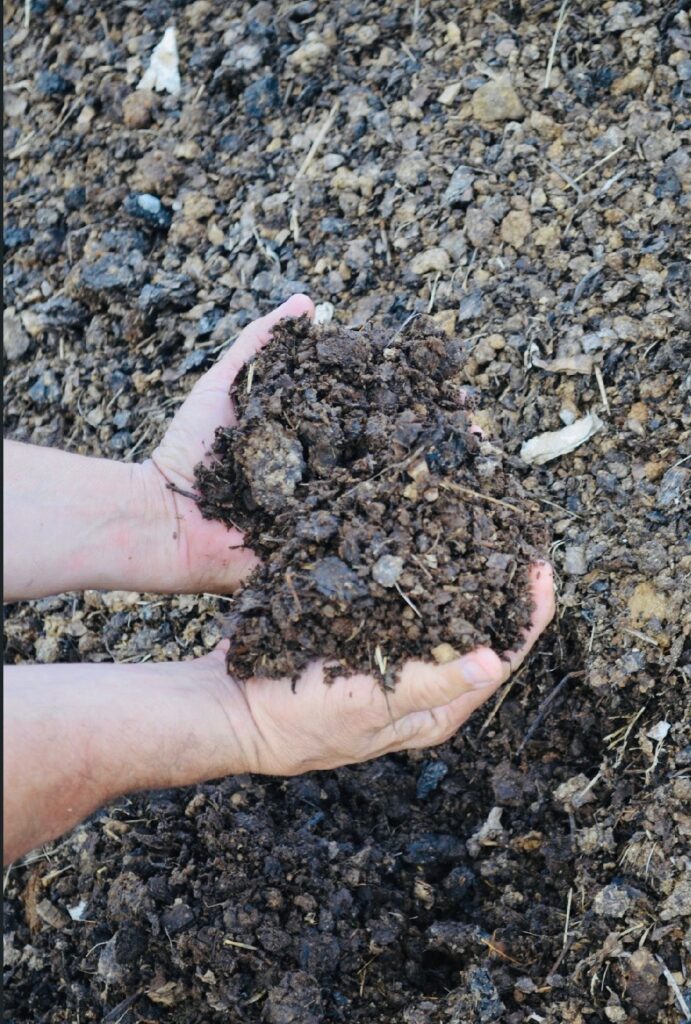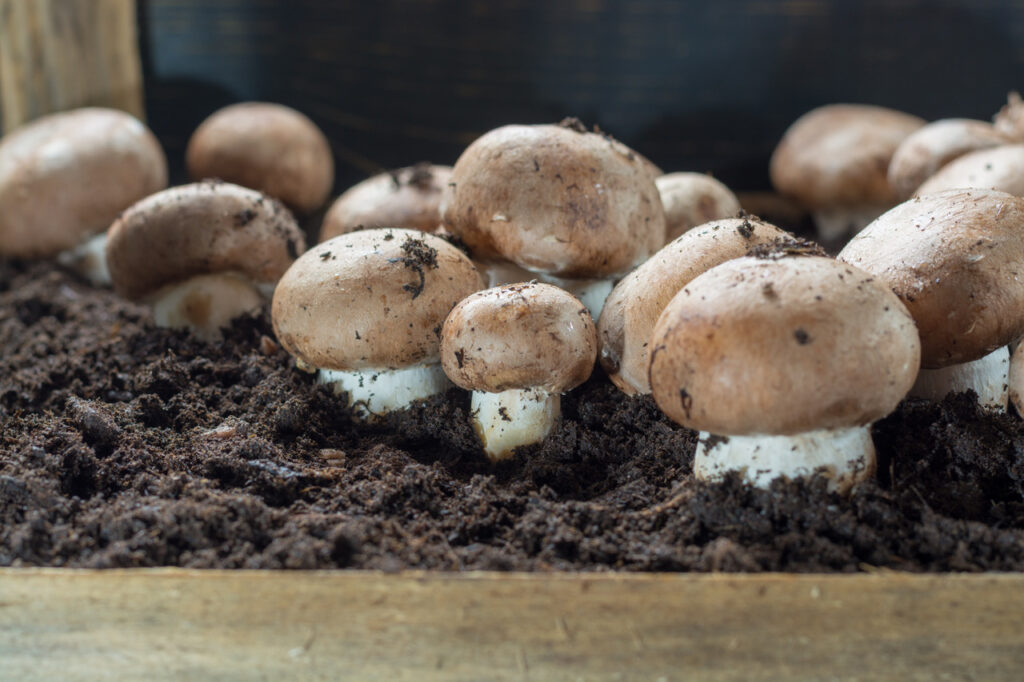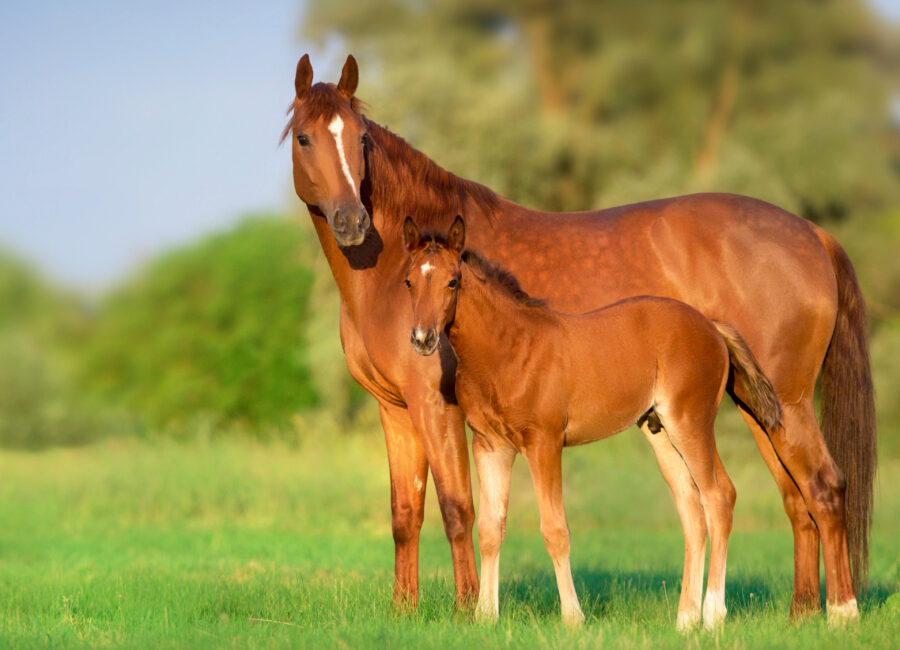Composting horse manure and stall bedding can transform a problem into an economic and environmental superpower.
Composting a sustainable and eco-friendly way to manage waste while creating nutrient-rich compost for your garden, fields or pastures. Save money, reduce environmental impact and even improve soil health by turning a removal and disposal problem into a valuable resource. Â
Here’s everything you need to know about composting manure and bedding.
Why Compost Horse Manure and Bedding?
Environmental Benefits:
- Waste Reduction: Composting recycles manure and bedding that might otherwise contribute to environmental pollution.
- Soil Health: The finished compost enriches garden soil with essential nutrients and organic matter, helping plants grow better and reducing the need for chemical fertilizers.

Economic Benefits:
- Cost Savings: Instead of purchasing commercial fertilizers, you can produce a high-quality soil amendment at little to no cost.
- Sustainable Land Management: Managing waste on-site helps you avoid disposal fees and contributes to a more sustainable operation.
- Potential Revenue: Farmers committed to sustainable, soil-friendly practices value good quality compost. They may be willing to pay for it or, at least, remove it from your property at no charge. These growers include organic, regenerative and sustainable farmers, small scale growers, hobbyists and gardeners.
Understanding Your Materials:
Horse Manure: Horse manure is rich in nitrogen and contains organic matter that is excellent for microbial activity in the compost pile. However, it may also contain weed seeds or pathogens, so the compost process must include subjecting the material to the high temperatures needed to kill these contaminants.
Stall Bedding: Bedding materials such as straw, wood shavings, or sawdust are high in carbon, which balances the high nitrogen content of manure. The type of bedding will influence the carbon-to-nitrogen (C:N) ratio in your compost.
- Pre- and Post-Consumer Cardboard: Cardboard’s high carbon content makes it ideal compost material. Cut in pieces, its layered structure adds bulk and absorption while enabling airflow needed by the microbes that break down organic matter.
Bedding made of “pre-consumer†cardboard, like Airlite Premium Cardboard Bedding, is ideal because it’s free of contaminants found in “post-consumer†cardboard. Bedding made of post-consumer cardboard may have food residues, oils, coatings, or inks that could make the compost unsafe for growing anything edible.
When composted properly, cardboard breaks down efficiently and relatively quickly.
- Straw: Often preferred because it adds structure to the pile and has a balanced C:N ratio when mixed with manure.
- Wood Shavings or Sawdust: These materials decompose more slowly and may require additional moisture or nitrogen sources to break down efficiently.
Getting Started: Planning and Preparation
1. Choose a Suitable Location
- Accessibility: Place your compost area near the barn or stall for easy hauling of manure and bedding.
- Drainage: Ensure the site is well-drained to prevent waterlogging, which can lead to anaerobic conditions and foul odors.
- Sun Exposure: A sunny location helps the pile heat up more effectively, speeding up the composting process.
2. Gather Tools and Materials

- Compost Bin or Pile Area: You can build a simple wooden enclosure or use a commercially available compost tumbler. Open piles work too if you have space.
- Pitchfork or Shovel: Essential for mixing and turning the compost pile.
- Thermometer: A compost thermometer helps monitor internal temperatures to ensure that the pile reaches pathogen-killing levels (ideally 140°F to 160°F or 60°C to 71°C).
Step-by-Step Guide to Composting
Step 1: Collect and Layer Your Materials
- Gather Manure and Bedding: Remove manure mixed with bedding from stalls or paddocks. If possible, remove excess bedding that isn’t saturated with manure to adjust the C:N ratio.
- Layering: Start with a base layer of coarse materials (straw or wood chips) to promote airflow. Alternate layers of manure (nitrogen-rich) and bedding (carbon-rich). Aim for a C:N ratio of roughly 25-30:1 for optimal microbial activity.
Step 2: Build Your Compost Pile
- Size Matters: Aim for a pile that is at least 3 feet wide by 3 feet tall by 3 feet long (approximately 1 cubic yard). A larger mass retains heat better and speeds up the decomposition process.
- Moisture Content: The pile should be moist but not soggy—like a wrung-out sponge. If it’s too dry, add water; if too wet, add more dry bedding or straw to balance it out.
Step 3: Maintain the Pile
- Aeration: Turn the pile with a pitchfork or shovel at least once a week. Proper aeration supplies oxygen to the microorganisms breaking down the materials and helps maintain higher temperatures.
- Temperature Monitoring: Use a compost thermometer to check that the pile reaches and maintains temperatures above 140°F for several days, which helps kill pathogens and weed seeds.
- Moisture and Texture Adjustments: Regularly check the moisture level. If the pile seems dry, lightly water it. If overly wet, incorporate more dry carbon-rich materials.
Step 4: Allow the Compost to Mature
- Curing Time: After several months of active composting (typically 3–6 months), the pile should cool and the materials will break down into a dark, crumbly substance with an earthy smell. Composting time varies by bedding material and best practices. Composted effectively, Airlite Cardboard Bedding can become pH-neutral black dirt in 8-12 weeks.
- Screening: For garden use, screen out larger particles or remnants of bedding that haven’t fully decomposed.
Composting Tips and Best Practices
- Mixing Materials Thoroughly: A well-mixed pile ensures even decomposition and prevents cold spots where decomposition slows down.
- Cover the Pile: Consider using a tarp to cover the pile. This helps retain heat and moisture while protecting it from excess rain.
- Avoid Adding Excessive Manure from Sick Horses: To prevent the spread of disease, avoid composting manure from horses that are ill or being treated with antibiotics until you are sure it won’t contaminate your compost.
- Use a Compost Turner: For larger piles, a mechanical compost turner can save time and effort.
Safety Considerations
- Personal Protective Equipment (PPE): Always wear gloves, a dust mask, and protective clothing when handling manure and turning the compost pile. (Airlite Cardboard Bedding is dust-extracted, which correlates to a low-dust compost pile.)
- Pathogen Control: Ensuring your pile reaches high temperatures is key to killing harmful pathogens. Never use unprocessed manure directly on edible plants.
- Local Regulations: Check with local agricultural or environmental agencies regarding any rules or recommendations for manure composting in your area.
With a little time and effort, you can turn your horse’s poop and soiled bedding into a sustainable superpower that enhances soil fertility and promotes eco-friendly waste management. It will certainly save you money, and maybe even generate revenue if there’s interest in top-quality compost in your area.






